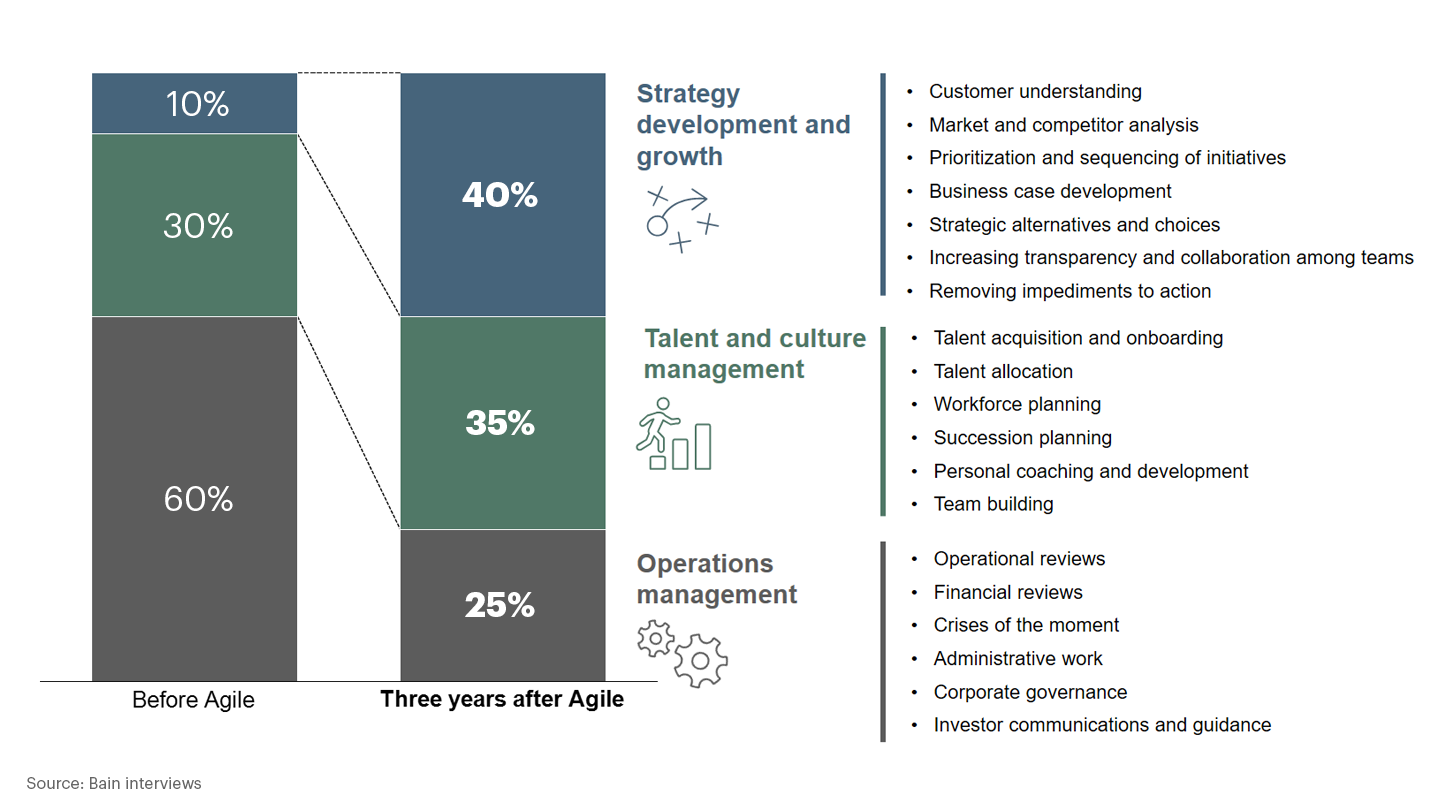Ask the Authors

Q: While scaling an Agile transformation within our company, our leaders’ roles within the new organization have become more challenging for them. What is your view on that?
Author Darrell Rigby responds: You are discovering the same thing we have found—that is, when properly scaling Agile, no role changes more than the role of leaders.
We focus on helping leaders do two things.
- Spend less time micromanaging: Delegation puts work into the hands of teams that are best able to accomplish it, helps build a future generation of skilled managers, and increases the team’s motivation, happiness and creativity.
- Spend more time leading: Effective delegation frees up time for senior executives to do what only they can do—namely, things such as sequencing strategic initiatives, getting the right people working on the right tasks, and providing clear context for what teams are doing and why.
Recently, we began comparing the calendars of senior leaders as they first begin to scale Agile to their calendars about three years later. The results are fascinating (see Figure). Experienced Agile leaders spend four times more hours on strategy development and growth, more time on talent management, and 60% less time on operations management. The result: Agile teams are more effective, and Agile leaders are more successful. And much happier.

